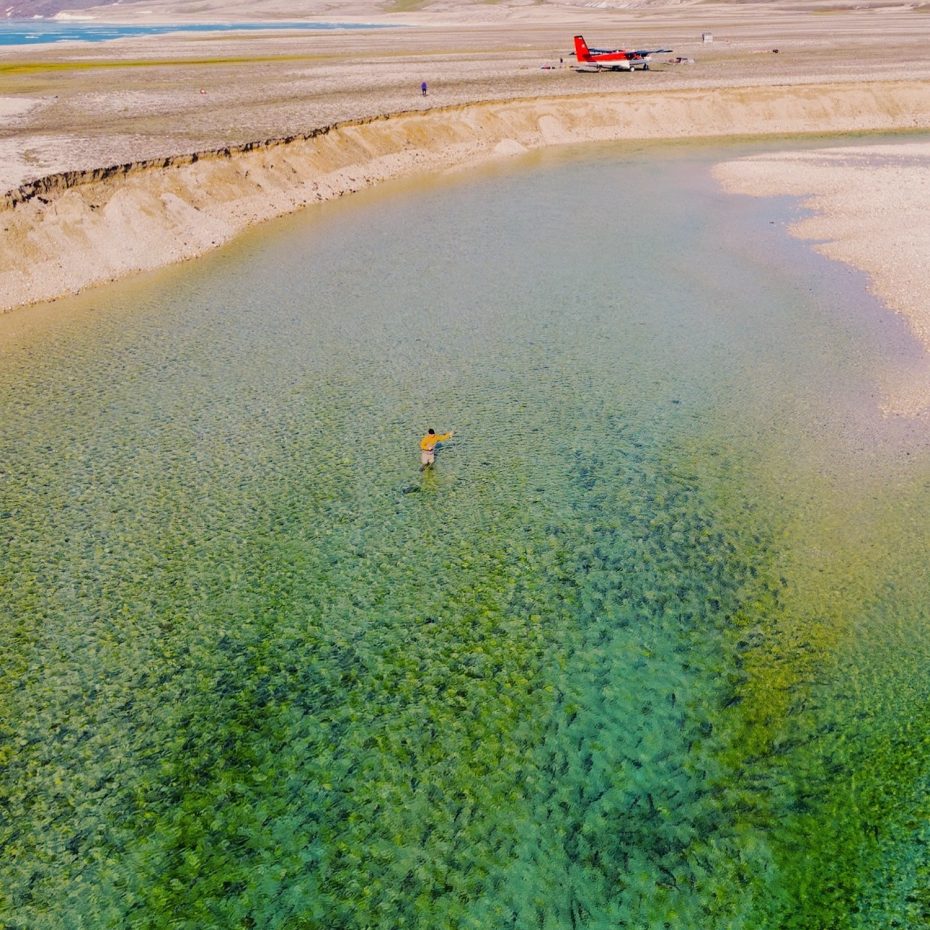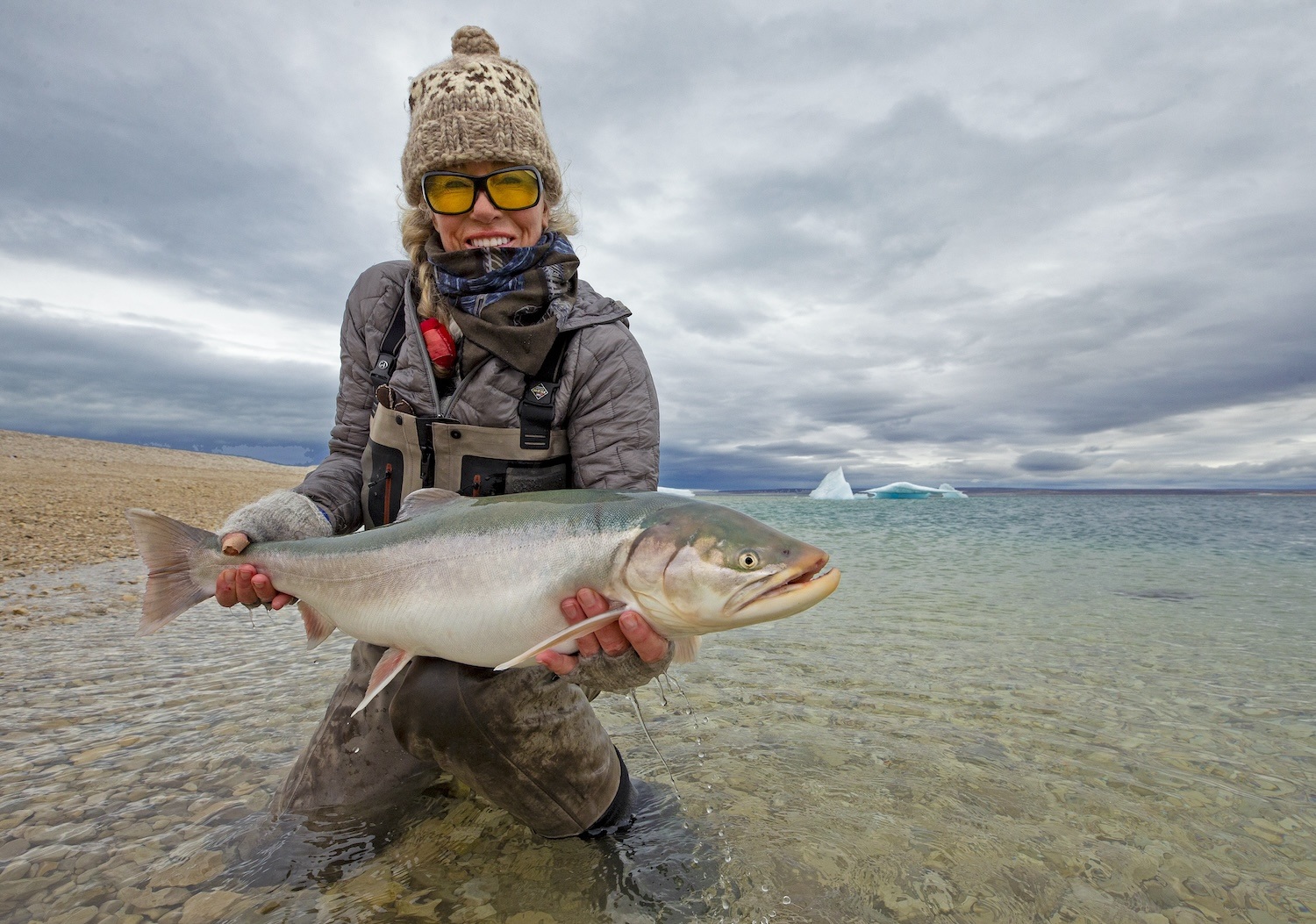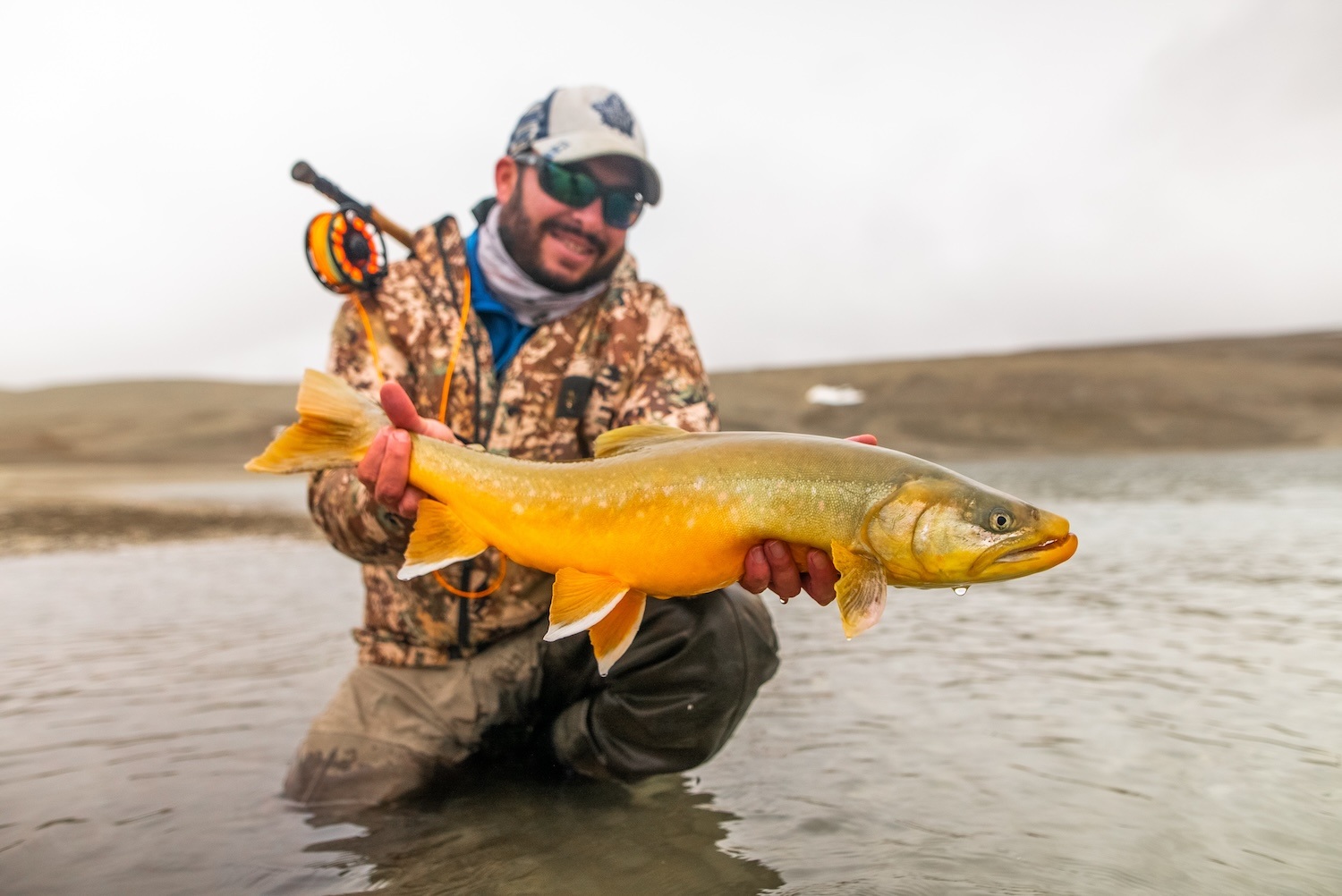
October 27, 2025 | Arctic Watch Wilderness Lodge
Fishing for Arctic Char
There’s something magnetic about Arctic char — the flash of silver and crimson beneath ice-cold northern waters, the balance of power and grace as the fish runs deep, and the sheer resilience of a species that thrives where few others can.
Found across Canada’s Arctic and subarctic regions, Arctic char are both a culinary delicacy and a fly fisher’s dream. But not all char are the same. Their life cycle can differ dramatically depending on whether they are sea-run (anadromous)or landlocked (resident) — a difference that profoundly shapes their behavior, coloration, and fishing tactics.
The Life of a Sea-Run Char
Sea-run Arctic char are travelers — migrating between the ocean and freshwater lakes or rivers each year. During the short Arctic summer, they leave their overwintering lakes to feed in the nutrient-rich coastal waters, often returning with vibrant silvery bodies and orange bellies. As fall approaches and freshwater temperatures drop, they migrate back inland to spawn and overwinter beneath ice-covered lakes.
This migration is driven by opportunity: the ocean offers an abundant food supply — capelin, sand lance, and amphipods — that fuels rapid growth. Sea-run char often reach impressive sizes (10–20 lbs is not uncommon), and their physical condition reflects that energy-rich marine diet. Their flesh tends to be a deep coral color, and their power on the line is unmistakable.

The Life of a Landlocked Char
Landlocked char, on the other hand, spend their entire lives in freshwater. Isolated by geography — sometimes for thousands of years since the last Ice Age — these fish have adapted to a closed ecosystem where food sources are more limited. They are typically smaller, often ranging between 2–6 lbs, though certain lake systems can produce giants.
Without the marine migration, landlocked char develop distinct coloration: darker backs, paler bellies, and stunning orange-to-red hues during spawning. They are less aggressive feeders than their sea-run counterparts, requiring a more patient and precise approach from anglers.

Fly Fishing Tips for Arctic Char
1. Timing and Location
- Sea-run char: Target them in tidal estuaries or river mouths during July and August, when they feed in the ocean. Early in the run, look for chrome-bright fish fresh from saltwater. They often hunt Arctic cod into these shallow streams that spill into the ocean. At times, we've seen them feeding on jellyfish in shallow waters as well.
- Landlocked char: Late summer to early fall is prime, especially as they stage for spawning near inlets and outlets.
2. Fly Selection
- Streamers: Arctic char love movement. Try patterns like Clouser Minnows, Zonkers, or Muddler Minnows. For sea-run fish, bright colors (chartreuse, orange, pink) mimic saltwater prey. Locally at Arctic Watch, we've often found that green and silver streamers that mimic Arctic cod can be very successful.
- Nymphs & Egg Patterns: As the spawn approaches, Glo-Bugs, San Juan Worms, or beadhead nymphs work well.
- Surface Flies: On calm evenings, small mouse or skater patterns can trigger explosive strikes in lakes. Floating flies can have limited success, but very fun to use!
3. Presentation & Technique
- Vary retrieve speed: slow strips often entice landlocked fish, while faster erratic pulls can trigger aggressive sea-run takes.
- Use sinking or sink-tip lines in deeper lakes; in rivers, switch to floating lines with weighted flies.
- Char often school — if you catch one, cast back immediately.
4. Gear Setup
A 6 to 8-weight rod offers the best balance for both lake and river char. Pair it with a sturdy reel and smooth drag — sea-run char in particular are notorious for long runs and deep dives. You are travelling to a remote part of the Arctic - better to have slightly bigger equipment (15 - 20lb test, etc) to allow for light packing and a one-rod does all setup!
Where to Experience It
At Arctic Watch Wilderness Lodge, anglers can experience both forms of Arctic char in the same week — sea-run fish in coastal rivers accessed by helicopter and landlocked giants in remote tundra lakes accessed by ATV. The experience is raw, elemental, and profoundly Arctic: clear water, midnight sun, and fish that have never seen a fly before.
Arctic char sashimi is the best in the world!
Closing Thoughts
Arctic char embody the wild spirit of the North — resilient, elusive, and utterly beautiful. Whether you’re chasing silver sea-runs under the midnight sun or sight-casting to glowing red landlocked fish in crystal lakes, each encounter is a window into one of the most remarkable freshwater species on the planet.
We're here to help.
We understand that booking a trip like this is a big endeavour. Please reach out to us with any questions that you might have regarding your upcoming adventure.



